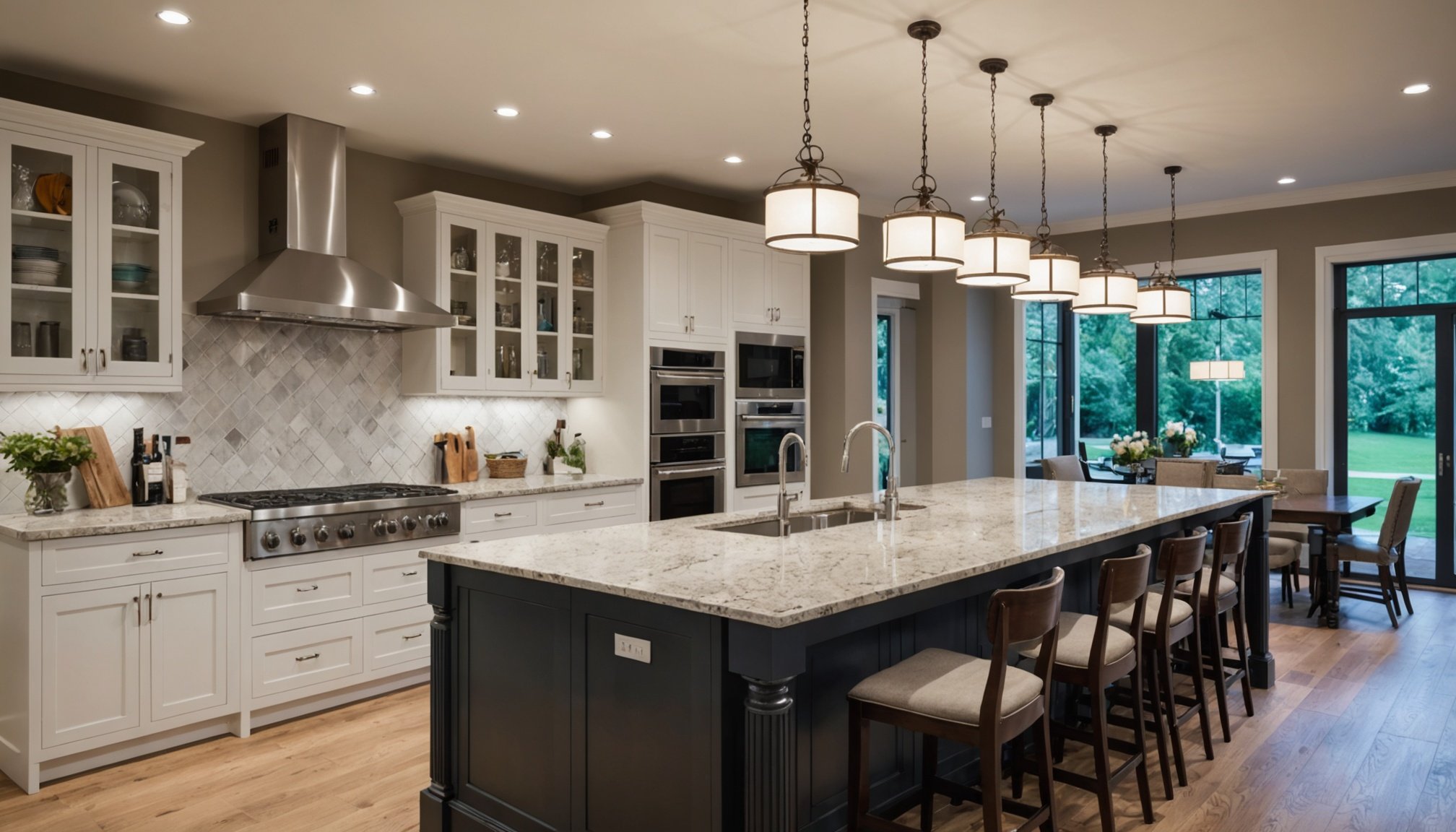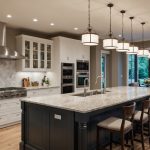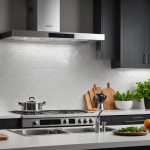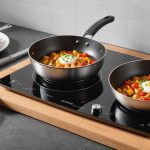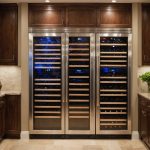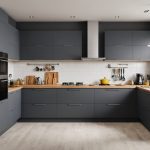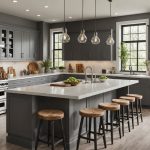Overview of Kitchen Island Lighting
An essential component in home design, kitchen island lighting serves both functional and aesthetic purposes. It provides necessary illumination for cooking and entertaining, while enhancing the overall ambiance of the space. As UK homes vary in layout and style, selecting the right lighting options is crucial.
Popular styles in the UK include pendant lights, which are suspended from the ceiling and provide focused light over the island. They offer flexible design choices, from sleek modern to rustic traditional styles. Additionally, recessed lighting is favoured for a minimalist look, discreetly illuminating the area without obstructing sight lines. For a dramatic effect, consider chandeliers or statement fixtures, which add a touch of elegance and sophistication to any kitchen.
Also read : Unlock culinary precision: the ultimate guide to selecting the ideal kitchen timer in the uk
When choosing lighting options, prioritise the island’s primary function. For frequent cooking, functional lighting with adjustable brightness is recommended. For social gatherings, mood lighting enhances the atmosphere, offering softer, diffused illumination. It’s also important to consider kitchen layouts; for instance, L-shaped or open plan kitchens may require different solutions to ensure even light distribution.
Incorporating a mix of styles can create visual interest and fulfil diverse lighting needs, ensuring your kitchen island is both practical and inviting.
In the same genre : Ultimate guide to maintaining your ceramic kitchen tiles in uk homes: expert tips & tricks
Types of Lighting Fixtures
Lighting fixtures come in various styles, each offering unique benefits. Understanding the different types can greatly enhance a kitchen’s functionality and aesthetic.
Pendant Lighting
Pendant lights are excellent for kitchen islands. They provide focused illumination, creating a distinct, inviting area. Pendant lights come in contemporary styles with sleek, modern lines, as well as traditional designs for classic elegance. When installing these lights, hang them approximately 30-36 inches above the island for optimal illumination. Spacing them evenly, about 24-30 inches apart, ensures balanced light coverage.
Recessed Lighting
Recessed lighting offers a minimalist design, blending seamlessly into the ceiling. This type of lighting is ideal for illuminating large areas without the visual clutter of hanging fixtures. Best placed around the perimeter of the kitchen or in a grid pattern, recessed lights distribute light evenly across the room. Many are compatible with dimmer switches, allowing you to adjust the ambiance to suit your needs.
Task Lighting
Task lighting is crucial for kitchen workspaces, such as chopping areas or stove tops. These lights focus on specific areas, enhancing functionality and safety. Options like under-cabinet LEDs are popular for providing bright, direct light. Combining task lighting with pendant or recessed lights ensures every corner of your kitchen is well-lit, creating a cohesive and functional lighting plan.
Aesthetic Considerations for Lighting
Designing a harmonious kitchen environment involves thoughtful integration of aesthetic lighting. Lighting styles that complement your kitchen’s design are crucial. Whether you’re embracing a rustic charm or aiming for sleek modernity, ensure that your lighting choices echo your theme.
When matching lighting styles with overall décor, consider each element—from pendant lights to under-cabinet fixtures. These should seamlessly blend with cabinetry, countertops, and flooring, ensuring a cohesive visual appeal.
Color temperature plays a significant role in setting the kitchen’s ambiance. Lower temperatures emit warmer tones, ideal for cozy settings, while higher temperatures produce cooler, energizing shades, perfect for task-oriented areas. For a balanced atmosphere, blend various color temperatures in different zones of your kitchen.
Incorporating lighting to accentuate architectural features or decorative materials enhances the kitchen’s aesthetic appeal. Use directional lighting to illuminate textures like stone walls or metallic tiles. Accent lights can draw attention to open shelving or display glass cabinetry, adding depth and interest.
Design harmony thrives when lighting becomes a part of the kitchen instead of an afterthought. Strategically chosen and placed lights can transform a simply functional space into an inviting and stylish sanctuary.
Installation and Measurement Tips
When it comes to lighting fixture placement over a kitchen island, precise measurement is crucial. Begin by measuring the length and width of your island. As a rule of thumb, lights should hang about 30-34 inches above the island surface, allowing ample space for functional use without causing glare.
Consider the island’s overall dimensions to choose fixtures that best complement the space. Avoid selecting fixtures that are too large or small; they should occupy around two-thirds of the island’s length for a balanced look.
For efficient installation, choose fixtures that complement the room’s aesthetic. Here’s a step-by-step guide for installing pendant lights:
- Turn off electricity to avoid accidents.
- Measure and mark desired fixture placement.
- Secure the mounting bracket to the ceiling.
- Attach the fixture to the bracket, securing it with screws.
- Reconnect your electricity and test the lighting.
Avoid these common pitfalls:
- Overcrowding lights can lead to a cluttered look.
- Inadequate fixture support might result in safety hazards.
- Incorrect measurements could lead to functionality issues.
Remember, careful planning and following these measurement guidelines can ensure a harmonious and efficient kitchen space.
Electrical Standards and Regulations in the UK
Understanding UK regulations is crucial for maintaining safety in kitchen electrical systems. The UK enforces strict electrical standards to mitigate risks such as electrical shocks and fire hazards. Among the key regulations are the British Standards BS 7671, known as the IET Wiring Regulations, which outline essential guidelines for electrical installations.
A significant aspect of these regulations is the requirement for consumer units, commonly referred to as fuse boxes, to be fitted with Residual Current Devices (RCDs). These devices provide a critical layer of protection by quickly disconnecting a circuit in the event of an electrical fault. All kitchen installations, including lighting fixtures, must comply with these standards to ensure safety and functionality.
Hiring qualified professionals for electrical work is not just a recommendation—it’s an obligation. Only certified electricians should perform installations and inspections to ensure compliance with UK regulations. They possess the expertise to navigate standards and safety guidelines, guaranteeing that all work is carried out correctly.
Engaging professional electricians can protect against potential hazards and ensure that your home meets the required electrical safety standards emphatically. Always prioritize safety and compliance in your kitchen’s electrical planning and execution.
Recommended Products and Where to Purchase
Selecting the perfect kitchen island lighting involves more than aesthetics—it requires understanding the trusted brands and where to buy them. In the UK, several lighting suppliers stand out in quality and design.
Top Brands for Kitchen Island Lighting
Exploring the best options, Tom Dixon is highly regarded for innovative and artistic lighting solutions. Known for distinctive shapes and luxury materials, their products add elegance and character to any kitchen. John Lewis & Partners offers a wide range of recommended products, focusing on durability and timeless style. Another UK favorite, Heals, is famous for contemporary design and sustainable solutions, making them a popular choice for environmentally conscious consumers. Each of these recommended products boasts unique features tailored to various design preferences.
Where to Buy
In the UK, kitchen lighting can be purchased from leading retailers such as John Lewis, offering in-store and online shopping experiences for convenience and variety. While online shopping provides accessibility and a wider selection, visiting stores can provide invaluable firsthand insights into quality and aesthetics. To discover exclusive designs, many consumers turn to local lighting suppliers who offer bespoke solutions. Engaging with these local experts can lead to truly customized lighting that perfectly complements your kitchen space.

